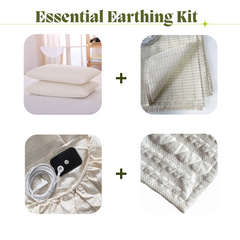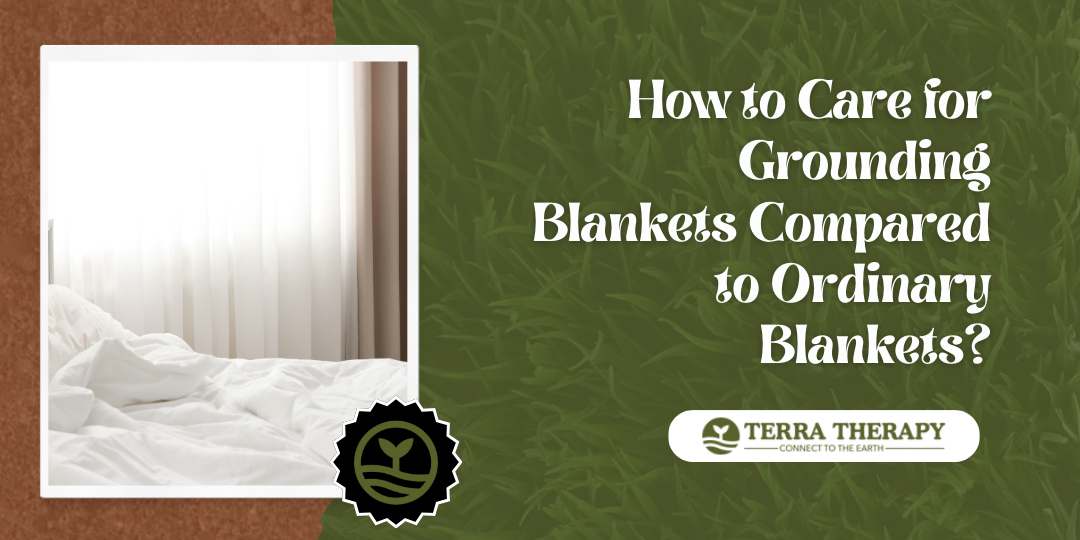Caring for grounding blankets can be tricky if you're used to ordinary blankets. Many users mistakenly treat them the same, reducing effectiveness and lifespan.
Grounding blankets need specific care due to their conductive properties. They contain silver fibers that require gentle handling.
This blog will guide you through proper washing, drying, and storage practices. It explains how to manage grounding wires during laundry and which cleaning agents are safe.
Keep reading to ensure your grounding blanket remains effective for a long time!
Key Takeaways
-
Wash grounding blankets every 1-2 weeks with warm water and mild liquid detergent.
-
Always air-dry grounding blankets or use low heat to protect conductive fibers.
-
Inspect the silver threads for damage every three months to ensure conductivity.
-
Avoid using bleach, fabric softeners, or dryer sheets, as they harm the blanket's effectiveness.
-
Store in a cool, dry place away from sunlight and moisture.
What Are the Best Washing Practices for Grounding Blankets?
Grounding blanket requires meticulous care to maintain their effectiveness. To ensure this, adhere to the following best washing practices: machine wash the blankets every 1-2 weeks using warm water on a gentle cycle.
To preserve the integrity of the blanket's materials, it's essential to use a mild liquid detergent similar to those recommended for baby clothes. Importantly, avoid using bleach, fabric softeners, or dryer sheets, as these can damage the conductive silver threads, reducing the blanket's grounding ability. Additionally, opt for air-drying or use a low heat setting if using a dryer, as high heat can degrade the blanket's special materials.
Regular maintenance is also crucial; inspect the silver threads periodically to ensure they continue to conduct electricity effectively. When washing, remember to disconnect any grounding wires and handle them with care to prevent damage. By following these steps, you can keep your grounding blankets in optimal condition, prolonging their usability and ensuring continued health benefits.
Why Is Air-Drying Preferred for Grounding Blankets?
Air-drying helps grounding bed sheets and blankets maintain their effectiveness. Dryers can harm conductive materials in the best grounding blanket, and high heat settings damage wires and fabrics, making them less effective.
Air-drying also avoids static shocks, which dryers may cause. Avoid dryer sheets, too; they add residues that block direct skin contact with the earth's energy. Keep your grounded sheets working well by letting them dry naturally.
Use a clothesline or hang indoors to air dry your earthing blanket safely. This method also saves electricity and reduces wear and tear on organic cotton materials used in grounded blankets.
These specialized textiles do not require ironing, ensuring long-lasting benefits like improved sleep quality and reduced chronic inflammation.
When Should Grounding Blankets Be Replaced Compared to Ordinary Blankets?
Transitioning from the importance of air-drying grounding blankets, it's also crucial to consider their replacement schedules compared to ordinary blankets. Grounding blankets require close inspection every three months to ensure there are no issues with conductivity.
In contrast, ordinary blankets typically need an annual check for signs of fraying or thinning fabric. If there are failures in the grounding wires, grounding blankets should be replaced every 2-3 years, significantly sooner than the 5-10 year lifespan expected of ordinary blankets based on fabric condition alone.
In terms of performance, grounded sheets and blankets demand regular checks to maintain a proper electrical connection, which is essential for their effectiveness. This starkly contrasts ordinary blankets, where the main concerns are warmth and comfort, typically reviewed only yearly.
It is critical to monitor grounding blankets for any decrease in their health benefits, such as reduced stress or improved sleep quality. Conversely, with ordinary blankets, the focus should be on noticing any loss in coziness or warmth over time.
Where Should Grounding Blankets Be Stored to Maintain Effectiveness?
Store grounding fitted sheets and blankets in a dry, cool place. Moisture can damage the conductive fibers. Avoid direct sunlight or high temperatures to keep the blanket effective.
Dust-free areas ensure longevity. "Proper storage can enhance longevity and effectiveness," experts say. Keep away from humidity for best results.
How to Handle Grounding Wires During Laundry?
Handle grounding wires with care to maintain the effectiveness of the best grounding blanket. Follow this list to ensure proper maintenance:
-
Inspect Wires: Check the grounding wires before washing them for any damage.
-
Disconnect Cord: Unplug the cord from the wall outlet and blanket.
-
Secure Ends: Tie loose ends of wires to avoid tangling in the wash.
-
Use Gentle Cycle: Set your washer to a gentle cycle without high agitation.
-
Cold Water Wash: Always use cold water to wash grounding bed sheets.
-
No Bleach or Fabric Softener: Avoid these agents as they can damage conductivity.
-
Air-Dry Only: Lay the blanket flat to dry; do not use a dryer.
What Cleaning Agents Are Safe for Grounding Blankets?
Use liquid detergent to wash grounded blankets. It ensures a gentle clean. Avoid bleach, fabric softeners, or dryer sheets, which can damage the blanket's conductivity.
A mild detergent works best for grounding sheets like earthing harmony sheets. Liquid detergent helps keep the blanket effective and safe to use.
Why Is Regular Maintenance Crucial for Grounding Blankets?
Regular maintenance of grounding blanket benefits is crucial for maintaining their effectiveness. Regular inspections can spot wear and tear, ensuring safety. For example, regularly checking grounding fitted sheets helps maintain proper grounding and energy flow.
Testing the conductivity frequently also ensures that earthing harmony grounding sheets work as they should. This supports restful sleep and other health benefits like better immune response.
Proper care extends the life and performance of these products.
How to Check for Wear and Tear on Grounding Blankets?.
Grounding blankets need regular checks to stay effective. Look at these points to spot wear and tear:
Check Silver Fiber:
Inspect the 5% conductive silver fiber for breaks or fraying. This fiber is critical for grounding.
Look at Stitching:
Examine all seams for loose threads or gaps. Strong stitching keeps the blanket intact.
Feel for Lumps:
Run your hand over the surface to feel any lumps or hard spots. These can signal damage inside.
Test Conductivity:
Use a multimeter to check if the blanket conducts electricity well. Poor conductivity means reduced benefits.
Observe Discoloration:
Notice any color changes in the fabric, especially near edges and corners. These areas wear out faster.
Inspect Plug and Cord:
Look at the grounding pin, coil cord, and designated grounding hole connector for signs of damage or corrosion.
Check Labels:
Ensure care labels are still readable so you can follow washing instructions correctly.
Look for Holes:
Spot any holes or tears on both sides of the blanket that could affect its function.
Feel Fabric Texture:
If the fabric feels rough or weakened in places, it can indicate wear from washing or use.
Smell Test:
Sniff your blanket after each wash cycle; musty odors might suggest mold growth due to improper drying methods, such as low heat settings.
Following these steps will help keep your grounding blanket in good shape longer, ensuring it provides maximum benefits like better sleep and reduced stress levels, all while staying effective in its job as an earthing product with potential health benefits, such as improving wound healing through direct contact with earth's energy.
Conclusion
The best grounding blanket needs special care. Wash them with warm water and liquid detergent every 1-2 weeks. Air-dry or use a low heat setting for best results. Store them in a cool, dry place to keep their effectiveness.
Check the grounding wires before washing them to avoid damage. Regular care ensures the blanket works well and lasts long.




